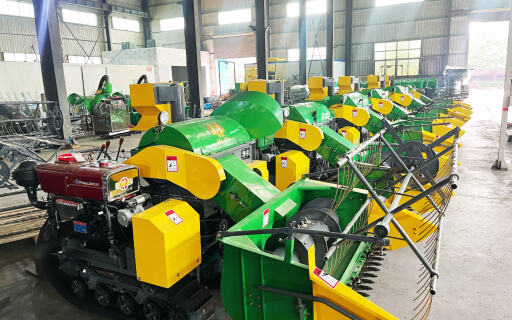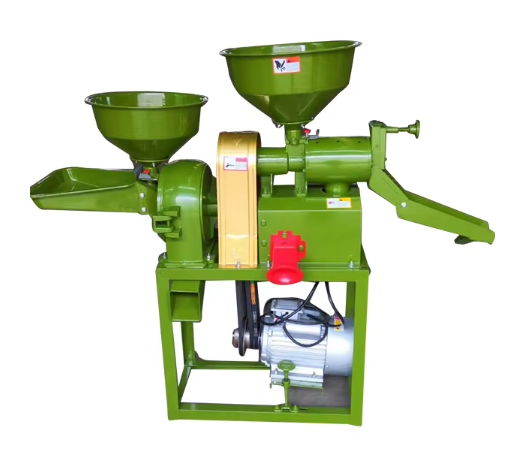Эволюция энергоэффективности в оборудовании для производства кормов
Ландшафт машины для переработки кормов за последние десятилетия промышленность претерпела значительные изменения, и энергоэффективность стала важным фактором в современных производственных процессах. Сегодняшнее оборудование для переработки кормов использует сложные технологии и инновационные принципы проектирования, которые позволяют максимизировать производительность при минимальном потреблении энергии. Этот сдвиг представляет собой не только экологическое сознание, но и стратегический подход к управлению эксплуатационными затратами и устойчивым методам производства.
Современное оборудование для переработки кормов охватывает широкий спектр устройств — от измельчителей и смесителей до грануляторов и систем охлаждения. Каждый компонент технологической линии был переработан с акцентом на энергоэффективность, с использованием передовых материалов и интеллектуальных систем управления, которые оптимизируют производительность при одновременном снижении потребления энергии. Внедрение этих технологий произвело революцию в подходе производителей кормов к своей деятельности, что привело к значительным улучшениям как в производительности, так и в устойчивости.
Основные компоненты энергоэффективной переработки кормов
Продвинутая технология шлифования
Современное оборудование для переработки кормов оснащено сложными системами измельчения, в которых используются точно спроектированные молотки и сита. Эти компоненты предназначены для достижения оптимального размера частиц при минимальном энергопотреблении. Приводы с переменной частотой позволяют операторам точно настраивать скорость двигателей в зависимости от различных видов сырья, предотвращая потери энергии из-за чрезмерного измельчения. Последние технологии измельчения также включают автоматическую регулировку зазора и функции определения нагрузки, обеспечивая стабильное качество выходного продукта при одновременном поддержании оптимального расхода энергии.
Умные датчики и системы мониторинга постоянно оценивают эффективность измельчения, автоматически корректируя параметры для поддержания высокой производительности. Эта оптимизация в реальном времени помогает избежать потерь энергии из-за излишней обработки, одновременно гарантируя, что частицы корма соответствуют точным техническим требованиям. Внедрение этих передовых функций позволило достичь экономии энергии до 25% по сравнению с традиционным оборудованием для измельчения.
Эффективные системы смешивания
Этап смешивания в процессе обработки кормов значительно повысил энергоэффективность благодаря внедрению инновационных конструкций лопастей и оптимизированных смесительных камер. Современное оборудование для обработки кормов использует смесительные инструменты с точно рассчитанными углами наклона, которые обеспечивают тщательное смешивание ингредиентов при минимальных затратах энергии. Продвинутые таймеры и автоматизированные системы подачи ингредиентов гарантируют, что циклы смешивания не будут слишком короткими (что приводит к низкому качеству) или слишком длительными (что ведёт к потере энергии).
Эти системы смешивания также оснащены улучшенными уплотнительными механизмами и тепловой изоляцией, что снижает потери энергии за счёт рассеивания тепла. Использование частотно-регулируемых приводов позволяет изменять интенсивность смешивания в зависимости от требований рецептуры, оптимизируя потребление энергии для каждой партии при сохранении качества продукции.

Технологические инновации, обеспечивающие эффективность
Умные системы управления
Современное оборудование для переработки кормов использует сложные системы управления, которые оптимизируют энергопотребление по всей производственной линии. Эти системы используют алгоритмы искусственного интеллекта и машинного обучения для анализа эксплуатационных данных и внесения корректировок в параметры обработки в режиме реального времени. Интеграция датчиков промышленного интернета вещей (IIoT) обеспечивает непрерывный контроль за показателями энергопотребления, позволяя проводить профилактическое техническое обслуживание и повышать эффективность.
Продвинутые интерфейсы управления позволяют операторам одновременно отслеживать и регулировать несколько параметров процесса, обеспечивая оптимальное энергопотребление при сохранении качества продукции. Эти системы также могут прогнозировать потребности в техническом обслуживании и выявлять потенциальные потери эффективности до того, как они повлияют на работу, способствуя долгосрочной экономии энергии.
Рекуперация тепла и термическая оптимизация
Одним из наиболее значительных достижений в эффективности оборудования для обработки кормов стало внедрение систем рекуперации тепла. Современное оборудование улавливает и повторно использует тепловую энергию на различных этапах процесса, особенно при охлаждении и сушке. Это восстановленное тепло может направляться на другие процессы, например, предварительную обработку сырья или поддержание оптимальной рабочей температуры в другом оборудовании.
Передовые системы терморегулирования включают несколько теплообменников и блоки рекуперации энергии, что значительно снижает общее энергопотребление технологической линии. Некоторые современные установки сообщили об экономии энергии до 30% благодаря эффективному внедрению систем рекуперации тепла.
Стратегии обслуживания и оптимизации
Программы прогнозируемого технического обслуживания
Современное оборудование для переработки кормов выигрывает от сложных систем прогнозируемого технического обслуживания, которые помогают поддерживать максимальную энергоэффективность. Эти программы используют передовые диагностические и мониторинговые инструменты для выявления потенциальных проблем до того, как они приведут к увеличению потребления энергии или выходу оборудования из строя. Регулярный анализ данных о производительности помогает операторам выявлять тенденции в потреблении энергии и заблаговременно принимать корректирующие меры.
Автоматическое планирование технического обслуживания обеспечивает работу всех компонентов на оптимальном уровне эффективности, а системы мониторинга в реальном времени уведомляют операторов о любых отклонениях от нормальных показателей потребления энергии. Такой проактивный подход помогает поддерживать стабильную энергоэффективность на протяжении всего жизненного цикла оборудования.
Техники оптимизации производительности
Постоянная оптимизация машин для переработки кормов предполагает регулярную оценку и корректировку параметров работы. Современное оборудование включает в себя встроенные инструменты оптимизации, которые анализируют данные производства и предлагают улучшения для повышения энергоэффективности. Эти системы учитывают такие факторы, как характеристики сырья, условия окружающей среды и требования к производству, чтобы определить наиболее энергоэффективные параметры работы.
Регулярная калибровка и тонкая настройка оборудования обеспечивают оптимизацию потребления энергии даже при изменении условий обработки. Этот процесс постоянной оптимизации помогает производителям поддерживать высокий уровень эффективности при одновременном соблюдении все более строгих стандартов качества.
Часто задаваемые вопросы
Сколько энергии могут сэкономить современные машины по переработке кормов по сравнению со старым оборудованием?
Современное оборудование для переработки кормов, как правило, обеспечивает экономию энергии на уровне 20–40% по сравнению с устаревшим оборудованием, в зависимости от конкретных процессов и внедрённых технологий. Эта экономия достигается за счёт повышения эффективности электродвигателей, улучшения управления процессом и применения передовых систем рекуперации тепла.
Какова рентабельность инвестиций при переходе на энергоэффективное оборудование для переработки кормов?
Срок окупаемости энергоэффективного оборудования для переработки кормов обычно составляет от 2 до 5 лет в зависимости от объёма производства и стоимости энергии. Такие факторы, как сокращение потребностей в обслуживании и улучшение качества продукции, зачастую сокращают срок окупаемости.
Как автоматизированные системы управления влияют на энергоэффективность в процессе производства кормов?
Автоматизированные системы управления оптимизируют потребление энергии путём непрерывного мониторинга и корректировки параметров процесса в реальном времени. Это обеспечивает стабильную экономию энергии в диапазоне 15–25%, одновременно поддерживая или улучшая качество продукции за счёт точного контроля процесса.
Содержание
- Эволюция энергоэффективности в оборудовании для производства кормов
- Основные компоненты энергоэффективной переработки кормов
- Технологические инновации, обеспечивающие эффективность
- Стратегии обслуживания и оптимизации
-
Часто задаваемые вопросы
- Сколько энергии могут сэкономить современные машины по переработке кормов по сравнению со старым оборудованием?
- Какова рентабельность инвестиций при переходе на энергоэффективное оборудование для переработки кормов?
- Как автоматизированные системы управления влияют на энергоэффективность в процессе производства кормов?

